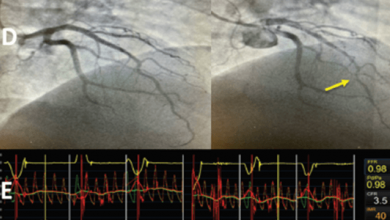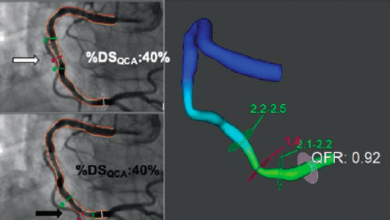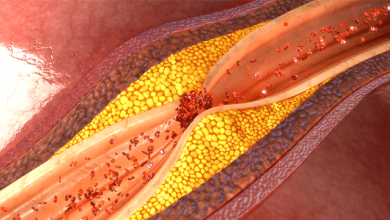Search results
PROMOTED
Author(s):
Nicolas M Van Mieghem
,
Kendra J Grubb
,
David Hildick-Smith
,
et al
Start date:
Mar 26, 2024
Author(s):
Samer Fawaz
,
Sarosh Khan
,
Rupert Simpson
,
et al
Added:
1 year ago
Author(s):
Roberto Scarsini
,
Dimitrios Terentes-Printzios
,
Giovanni Luigi De Maria
,
et al
Added:
3 years ago
Acute coronary syndromes (ACS) encompass a wide spectrum of clinical presentations that range from ST-elevation MI (STEMI) to non-ST-elevation MI and unstable angina. These conditions are life threatening and remain a source of high morbidity and mortality. Unfortunately, despite major accomplishments worldwide in timely reperfusion with percutaneous coronary intervention (PCI), an important…
View more
Author(s):
Robert Sykes
,
Daniel Doherty
,
Kenneth Mangion
,
et al
Added:
2 years ago
Author(s):
Luigi Di Serafino
,
Fabio Magliulo
,
Giovanni Esposito
Added:
2 years ago
Author(s):
Tom Ford
,
Colin Berry
Added:
3 years ago
Ischaemic heart disease persists as the leading global cause of death and lost life years in adults.1 Angina is a common clinical presentation of ischaemic heart disease related to a supply:demand mismatch of myocardial blood flow, typically provoked by exertion or stress. Invasive coronary angiography is the reference test for angina and identifies obstructive coronary artery disease (CAD) as a…
View more
Author(s):
Shah R Mohdnazri
,
Thomas R Keeble
,
Andrew SP Sharp
Added:
3 years ago
Fractional flow reserve (FFR) is an index used to describe the physiological significance of a coronary stenosis. It measures the pressure drop under conditions of maximal hyperaemia between the aorta and a selected vessel location distal to an angiographic lesion.1 Several FFR studies have identified patient groups in whom coronary stenting is associated with improved outcomes when compared with…
View more
Author(s):
Stephan Achenbach
,
Tanja Rudolph
,
Johannes Rieber
,
et al
Added:
3 years ago
The invasive measurement of fractional flow reserve (FFR) can determine the haemodynamic relevance of coronary artery stenoses. Determination of FFR is recommended in coronary artery stenoses with a luminal diameter narrowing between 50 % and 90 % if no non-invasive proof of ischaemia is available.1 To measure the FFR of a given coronary lesion, a wire or a microcatheter equipped with a…
View more
Author(s):
Sayan Sen
,
Justin E Davies
Added:
3 years ago
The use of physiology to guide revascularisation in patients with coronary disease has been demonstrated to improve clinical outcomes and reduce costs.1,2 Despite this, its adoption into clinical practice is very low,3 moreover, when it is employed it is used simplistically – only to determine if the vessel is ischaemic or not.
Recently, several new indices of stenosis severity have been…
View more
Author(s):
Barry Hennigan
,
Keith Robertson
,
Colin Berry
,
et al
Added:
3 years ago
The original studies of coronary balloon angioplasty performed by Andreas Gruentzig attempted to employ physiological guidance by measuring trans-stenotic gradients with over-the-wire angioplasty catheters.1 However, these catheters were of such large calibre that they contributed to the stenosis being assessed and in addition, measurements were made at rest as the importance of assessing…
View more

















